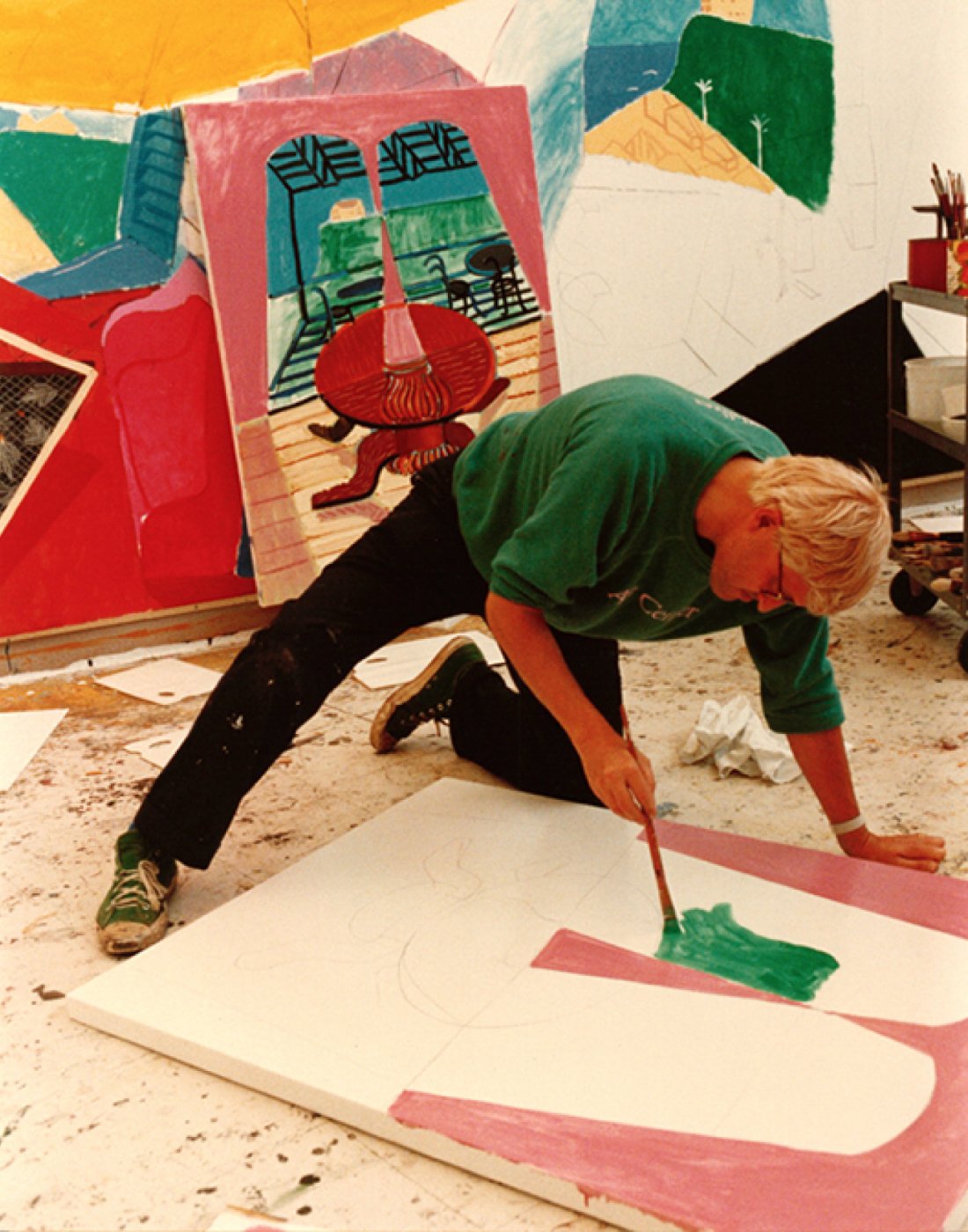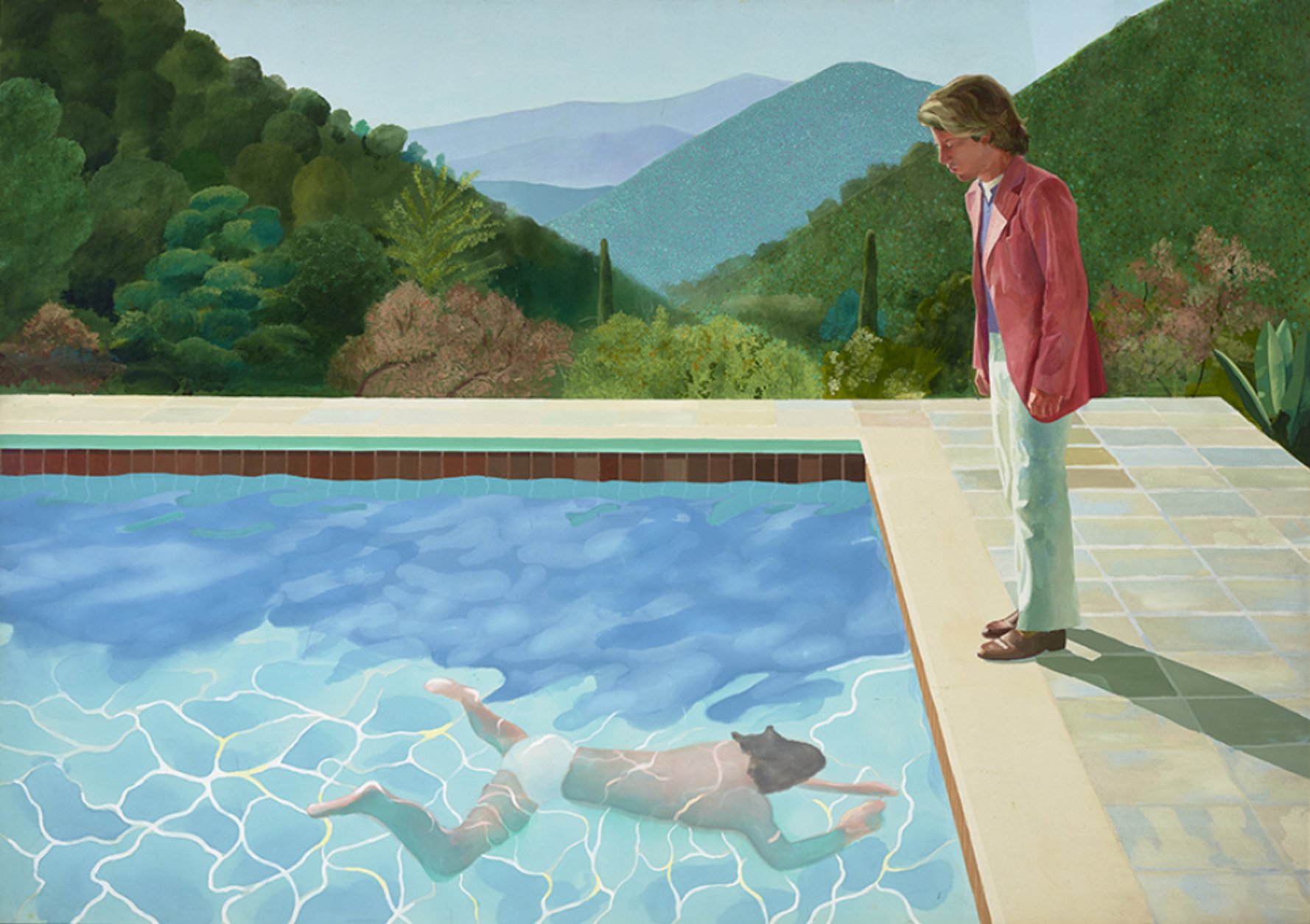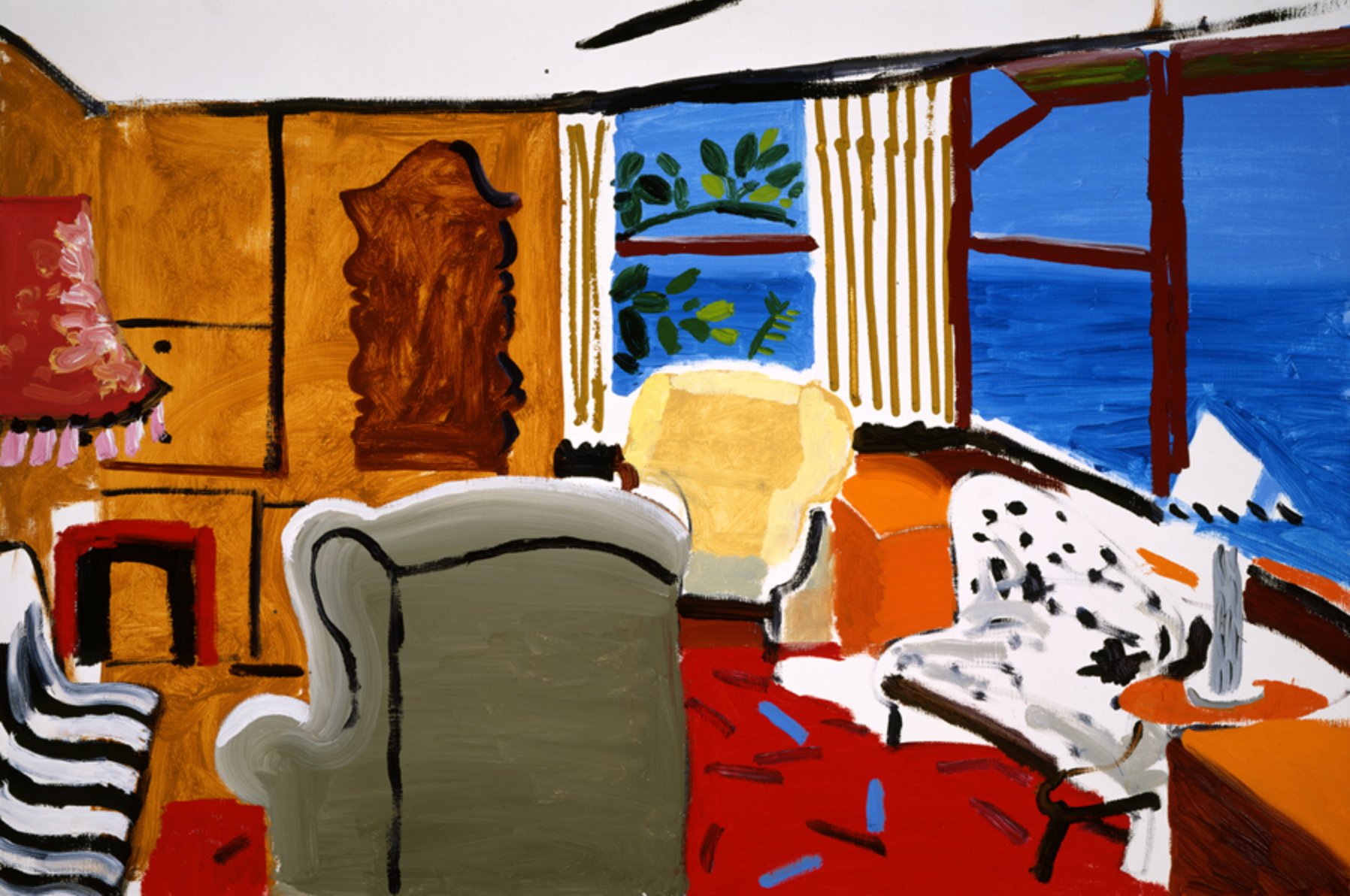INSPIRATIONAL ARTIST
David Hockney
Learning from David Hockney’s Artistic Legacy
David Hockney is widely regarded as one of the most influential artists of the 20th and 21st centuries. Known for his bold use of color, innovative approaches to technology, and ability to consistently reinvent his practice, Hockney’s career is a powerful source of inspiration and learning for artists today.
Color as Language
Hockney’s vibrant palettes demonstrate how color can be more than an aesthetic choice—it can be a language in itself. From his iconic pool paintings to his landscapes, Hockney’s colors evoke mood, perspective, and even a sense of temperature. For artists, his work is a reminder to experiment boldly with color, pushing beyond naturalistic hues to find emotional resonance and personal meaning. Consider how different color relationships can alter the atmosphere of your work and guide viewers’ responses. In short: let color do some of the storytelling.

David Hockney Painting © The David Hockney Foundation

Portrait of an Artist (Pool with Two Figures) © The David Hockney Foundation
Embracing New Technologies
What sets Hockney apart is his willingness to adopt and adapt new tools. Over the decades, he’s used photocopiers, fax machines, Polaroid cameras, iPads, and digital drawing software as integral parts of his practice. Rather than resisting change, Hockney embraced these tools to expand his creative vocabulary. For contemporary artists, the takeaway is clear: stay curious about emerging technologies. Whether it’s learning to paint digitally or exploring augmented reality, new tools can offer fresh perspectives and open up possibilities that traditional methods alone might not.
Painting with light
In 1985, David Hockney experimented with emerging technologies and embraced collaborations that pushed the boundaries of his artistic process. Highlights included his use of Quantel Paintbox, an early computer graphics system, which he employed to create digital artworks and explore new modes of image-making. This period also saw Hockney collaborating with other creatives, such as designers and photographers, and continuing his exploration of stage design, ultimately broadening the scope of his artistic practice and reaffirming his reputation as an innovator in the art world.

Pearblossom Highway, 11-18 April 1986, #2
This is one of David Hockney’s most iconic photo collages. Composed of hundreds of individual Polaroid photographs, the piece captures a stretch of a desert road in Southern California. However, rather than presenting a single, continuous perspective, Hockney uses overlapping and fragmented images to convey multiple viewpoints at once, creating a dynamic and layered experience. This technique challenges traditional notions of perspective and time in photography, offering a vibrant and complex interpretation of a seemingly ordinary highway scene.
© The David Hockney Foundation
Observation and Space
Hockney’s work often explores the relationship between observation and spatial understanding. His series of Yorkshire landscapes, for example, reveals a deep engagement with perspective and multiple viewpoints. By studying how he constructs space—layering elements, shifting perspectives, and sometimes abandoning linear perspective altogether—artists can learn how to break free from conventional approaches to composition. Experimenting with unconventional perspectives, or combining multiple vantage points in a single work, can create a more dynamic and engaging visual experience.

Living room at Malibu with view © The David Hockney Foundation

Guest House Garden II, 2001 © The David Hockney Foundation
Finding Inspiration in Everyday Life
A defining characteristic of Hockney’s work is his ability to find profound inspiration in the everyday. Swimming pools, backyards, rural roads or his dogs—these seemingly ordinary subjects become extraordinary through his lens. Artists can take a cue from Hockney’s practice by looking more closely at their own environments. Often, the most compelling subjects are the ones right in front of you; it’s the artist’s vision that transforms them. Challenge yourself to revisit familiar places or objects and find new ways to represent them.
Pursuing Lifelong Growth
Hockney’s career is a testament to continuous evolution. From the naturalistic portraits of his early years to his playful stage designs, from his famous poolside scenes to his digital explorations, he’s never stopped experimenting. Artists can learn from his example by staying open to change, embracing new techniques, and continually questioning their creative habits. Growth often comes from risk-taking—trying something new, making mistakes, and discovering unexpected breakthroughs.

African Violet on a Purple Table, New York, 2002 © The David Hockney Foundation

Breakfast with Stanley in Malibu, Aug. 23, 1989, 1989 © The David Hockney Foundation
In essence, Hockney’s approach to art isn’t just about the work he creates; it’s about his attitude toward making. By studying his use of color, technology, perspective, and everyday subjects, as well as his unwavering curiosity, artists can find a wellspring of ideas and techniques to incorporate into their own practices.
David Hockney’s legacy isn’t just a body of work—it’s an ongoing lesson in how to stay inventive, bold, and inspired as an artist.
David Hockney in Numbers and Fun Facts:
• 1937: The year Hockney was born, in Bradford, England.
• $90.3 million: The record-breaking auction price for his painting Portrait of an Artist (Pool with Two Figures), making him the world’s most expensive living artist at the time.
• 18,000 Polaroids: Estimated number of Polaroids Hockney took to create his groundbreaking photo collages during the 1980s.
• 1 iPad: The tool he used to create over 100 digital paintings in his 2012 exhibition A Bigger Picture.
• 72 years: The span between his first gallery show in 1960 and his most recent major exhibition, showcasing an extraordinary career of sustained innovation.
• Countless cigarettes: Hockney has been a lifelong smoker and famously includes ashtrays and cigarettes as recurring motifs in his studio photographs and self-portraits.
• 1,100 Yorkshire landscapes: The approximate number of works he created while exploring the East Yorkshire countryside over the course of six years.
To learn more about David Hockney and explore his work in depth, visit the David Hockney Foundation website.
Interested in Being Featured?
We’re always on the lookout for talented artists to showcase on our platform. If you’d like your work to be considered, we’d love to hear from you. Send us a brief introduction and a link to your portfolio or website, and you could be our next featured artist. Don’t miss this chance to share your story and work with our audience—submit your proposal today!




